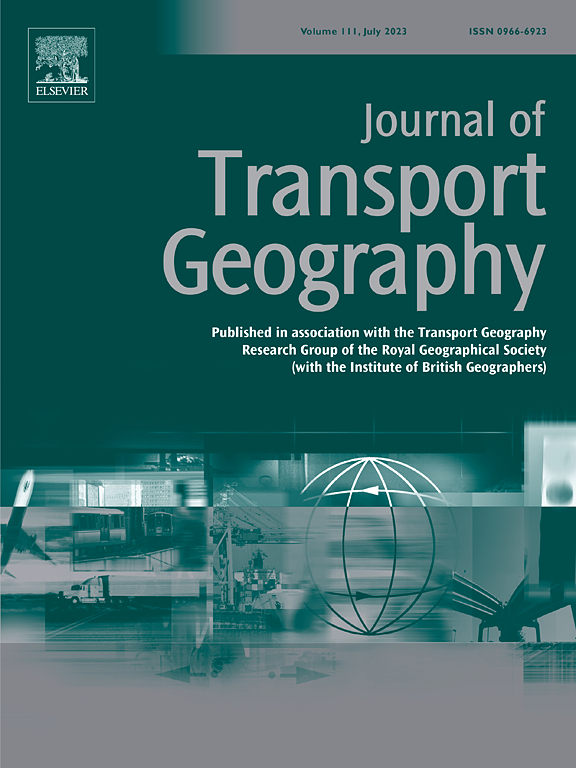基于元胞数据的城市人口时空结构研究——以北京市为例
IF 5.7
2区 工程技术
Q1 ECONOMICS
引用次数: 0
摘要
在快速城市化的背景下,以往的研究往往忽视了同样利用城市功能的非居民人口。不同的人口群体在观察时间尺度上动态变化。然而,由于传统的数据采集困难,长期观测和研究时间动态一直是一个挑战。本研究利用蜂窝数据对北京的人口进行了为期六个月的跟踪,旨在提供更精确的城市人口构成和行为分析。主要研究成果如下:1)基于日期轨迹数据,考虑长期停留模式,结合聚类算法和复杂网络理论,提出了一种新的城市人口结构分析框架。2)观测时间窗(OTW)与已识别的城市人口结构密切相关。通过多层次、多视角的敏感性分析,对不同地区的种群规模和比例进行了敏感性分析。将分类结果与综合交通调查的常住人口数据进行了验证,从而确定了捕获城市人口结构的最佳OTW。3)基于复杂网络理论,构建城市出行网络(UTNs)。结果表明,不同群体的旅游行为具有明显的空间异质性和多中心模式,这反映在全球特征、地方特征和社区结构上。这些发现为城市交通规划和管理提供了有价值的见解,突出了针对不同人口群体的特点制定差异化战略的必要性。本文章由计算机程序翻译,如有差异,请以英文原文为准。
Exploring population spatiotemporal structure of cities with cellular data: A case study of Beijing
Amid rapid urbanization, prior studies frequently overlook non-resident populations who also utilize urban functions. Different population groups change dynamically over observation time scales. However, due to the difficulty of traditional data acquisition, it has been challenging to observe and study the temporal dynamics over the long term. This study utilizes cellular data to conduct a six-month tracking of the population in Beijing, aiming to provide a more precise analysis of urban population composition and behavior. The key findings are as follows: 1) Based on date trajectory data and considering long-term stay patterns, this study proposes a novel framework for examining urban population structures by integrating clustering algorithms and complex network theory. 2) The observation time window (OTW) was found to be closely associated with the identified urban population structure. A multi-level and multi-perspective sensitivity analysis was conducted on population size and proportion across different OTWs. The classification results were validated against resident population data from comprehensive transportation surveys, resulting in the identification of the optimal OTW for capturing the urban population structure. 3) Based on complex network theory, urban travel networks (UTNs) were constructed. Results revealed pronounced spatial heterogeneity and multi-centric patterns in travel behaviors across different groups, as reflected in global characteristics, local characteristics, and community structure. These findings offer valuable insights for urban transportation planning and management, highlighting the need for differentiated strategies tailored to the characteristics of diverse population groups.
求助全文
通过发布文献求助,成功后即可免费获取论文全文。
去求助
来源期刊

Journal of Transport Geography
Multiple-
CiteScore
11.50
自引率
11.50%
发文量
197
期刊介绍:
A major resurgence has occurred in transport geography in the wake of political and policy changes, huge transport infrastructure projects and responses to urban traffic congestion. The Journal of Transport Geography provides a central focus for developments in this rapidly expanding sub-discipline.
 求助内容:
求助内容: 应助结果提醒方式:
应助结果提醒方式:


